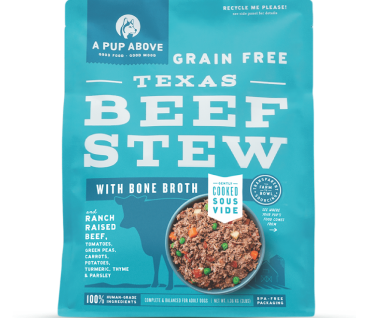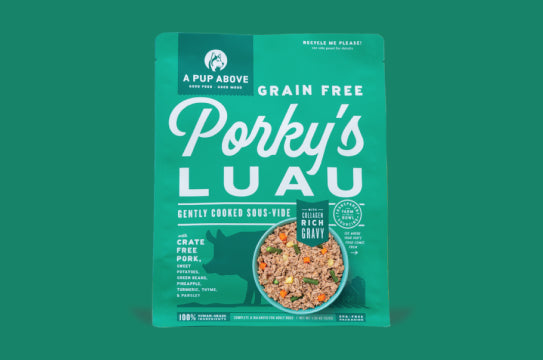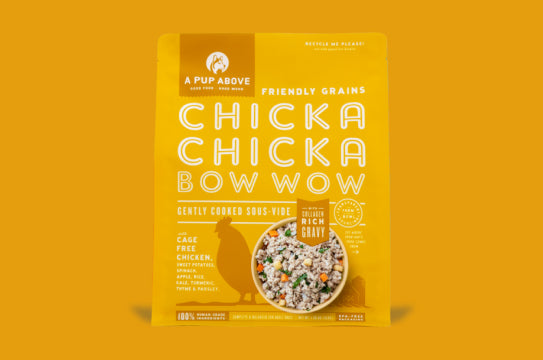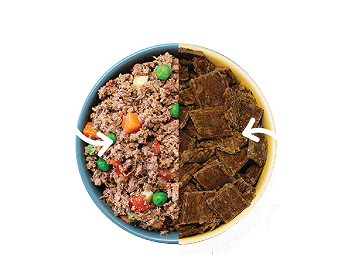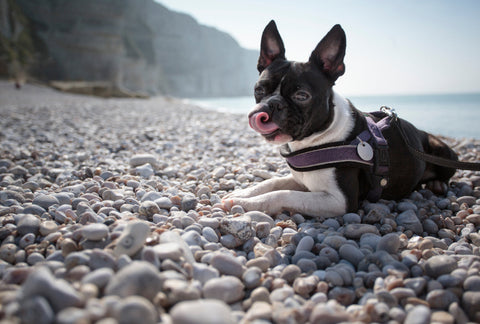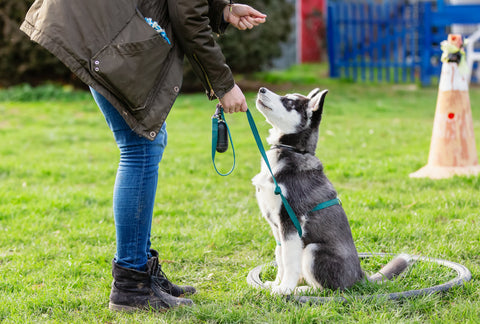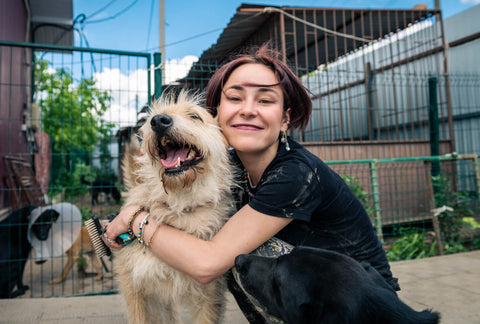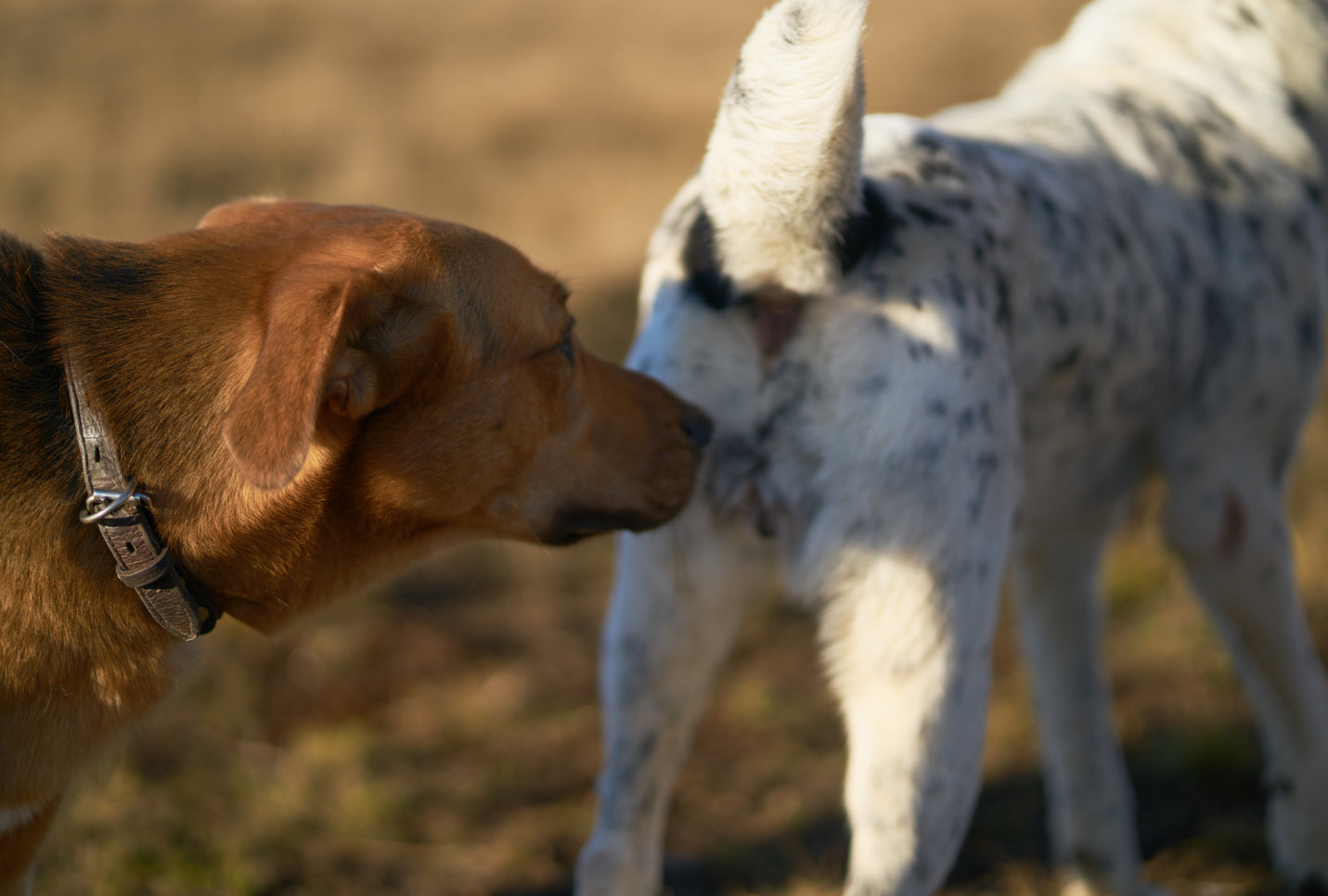
Why Do Dogs Sniff Butts?
Dogs are curious creatures. They use their sensitive noses to explore the world around them, but their sniffing habits can sometimes leave us scratching our heads. Why do dogs sniff butts, and what information are they gathering?
This article explores dog sniffing behavior, its purpose, and what it reveals about canine communication. So if you've ever wondered why your beloved pup is interested in the rear ends of their fellow four-legged pals — keep reading.
The Science Behind Why Dogs Sniff Butts
First things first, let's talk about the incredible power of a dog's nose. Canines have an extraordinary sense of smell that puts our human noses to shame. They possess up to 300 million olfactory receptors (compared to our puny six million) that can detect scents with astonishing precision.
Sniffing each other's butts is like reading a scent-filled novel that tells dogs everything they need to know about each other. Imagine walking into a room and instantly knowing who has been there, what they had for breakfast, and whether they're having a good day or not.
That's the level of olfactory detective work dogs are capable of. Their noses are finely tuned instruments that can pick up subtle chemical signals that our human noses can't even fathom.
How Do Dogs Communicate?
So, why do dogs find butts so fascinating? It's all about communication! Dogs have scent glands located in their anal area that produce unique chemical signals.
When they sniff another dog's behind, they're gathering a wealth of information — like a furry Facebook profile. They can detect details about the other dog's gender, age, health, and even mood. It's their way of exchanging introductions and getting the latest gossip in the canine community.
Think of it as a doggie version of exchanging business cards. Dogs sniff to gather information about each other, establish a social hierarchy, and even determine if they've met before. Unlike humans, who rely on words and eye contact to communicate, dogs can convey their emotions and intentions through scent.
The "Second Nose"
But wait, there's more — dogs also have a superpower hidden inside their noses called the Jacobson's organ. Often referred to as the "second nose," this specialized organ is located in the roof of their mouths.
When dogs sniff butts (or anything intriguing), they often make a funny face resembling a sneer or goofy grin. This facial expression is called the Flehmen response, and it's their way of directing scents to the Jacobson's organ for further analysis.
The Jacobson's organ is like a secret laboratory where scents are examined with great precision. It allows dogs to process pheromones, chemical signals that carry important information about potential mates, reproductive status, and social cues.
So when your furry friend gives a good sniff, they're not just being nosy— they're gathering a wealth of data to better understand the world around them.
How Do Dogs Bond With Each Other?
Beyond the biological aspects, butt-sniffing also plays a vital role in social bonding among dogs. Just as we shake hands or exchange pleasantries when meeting someone new, dogs sniff each other's butts as a way to say, "Hello, friend!" It's their version of a friendly greeting and a means of establishing familiarity.
Through this intimate exchange of scents, dogs can recognize individuals they've met before, identify members of their pack, and even determine the social status of other dogs. It's like they have their own secret handshake that allows them to navigate the intricate social dynamics of the canine world.
Etiquette and Butt-Sniffing Faux Pas
While dogs may find butt-sniffing perfectly natural and acceptable, we humans might raise an eyebrow or two. It's important to understand the etiquette behind this behavior and how to navigate it in social settings.
For starters, allowing dogs to engage in this form of communication when they're meeting other dogs is crucial. After all, it's their way of gathering information and establishing a rapport. However, it's equally important to be mindful of situations where butt-sniffing may not be appropriate, such as when meeting unfamiliar dogs in public places or during formal gatherings.
If you find yourself in such a situation, it's best to keep dogs on a leash and allow for polite, controlled introductions. Not all dogs are comfortable with butt-sniffing, just as some humans may not appreciate an unsolicited hug. Respecting boundaries and ensuring the safety and comfort of all involved is key.
The Canine Sniffing Code
While dogs have their own unspoken rules when it comes to sniffing butts, there are a few key takeaways for us humans:
- Allow dogs to engage in butt-sniffing when meeting other dogs in appropriate settings, as it is an essential form of canine communication.
- Respect individual dog preferences and boundaries. Not all dogs enjoy butt-sniffing, so observe their body language and adjust accordingly.
- Keep an eye out for signs of discomfort or aggression during introductions. If tensions arise, it's best to separate the dogs and seek professional guidance if needed.
- Maintain a clean and healthy environment for dogs to engage in social interactions.
- Regular grooming and hygiene practices help prevent any unwanted odors.
Why Is My Dog Sniffing My Butt?
Now you know why your beloved pooch likes to sniff other canine butts, but why do some dogs also have an interest in sniffing human butts? While it may seem odd to us, there are a few reasons why dogs might exhibit this behavior:
Familiarity
Dogs rely heavily on their sense of smell to identify and recognize individuals. Since they spend significant time with their human family members, they become familiar with their unique scent. Sniffing the human may be their way of reaffirming that familiarity and strengthening their bond.
Scent Marking
Dogs have scent glands in their anal area, and when they sniff or lick a human's butt, they may leave their scent behind as a form of marking. This behavior is more common in dogs that are particularly bonded with their human companions.
Curiosity
Dogs have an innate curiosity and an insatiable need to explore their surroundings through their noses. It piques their curiosity when they encounter unfamiliar scents, such as those found in humans. Dogs may be intrigued by the unique combination of scents emanating from that particular area, prompting them to investigate and satisfy their inquisitive nature.
Can I Stop My Dog from Sniffing Butts?
If you find your dog's interest in sniffing human butts to be undesirable or uncomfortable, here are a few tips to discourage this behavior:
Tip #1: Redirect Their Attention
When you notice your dog attempting to sniff a human's butt, quickly redirect their attention to an appropriate behavior or command, such as sitting or offering a paw. Reward them with a handful of their favorite fresh dog food and praise them for responding to the redirection.
Tip #2: Reinforce Polite Greetings
Teach your dog an alternative greeting behavior, such as sitting calmly or sniffing the person's hand. Practice these greetings consistently and reward them for appropriate behavior.
Tip #3: Use Positive Reinforcement
Reward your pup for refraining from sniffing human butts and instead engaging in desired behaviors. Positive reinforcement, such as treats, praise, or play, can help reinforce and encourage the behaviors you want to see.
Tip #4: Train a "Leave it" Command
Teach your dog the "leave it" command, which can be used to redirect their focus away from undesirable behaviors. With consistent training, your dog will learn to respond to this command and refrain from sniffing human butts.
Tip #5: Maintain Good Hygiene
Ensure you and your family practice good personal hygiene to minimize any enticing scents that might attract your dog's attention. Regular bathing, cleanliness, and appropriate elimination practices can help reduce their interest in sniffing human butts.
Tip #6: Seek Professional Help if Needed
If your dog's butt-sniffing behavior persists or becomes a concern, consult a professional dog trainer or behaviorist. They can provide personalized guidance and strategies to address the behavior effectively.
Note: It's important to approach training and behavior modification with patience and consistency. With time and positive reinforcement, you can help your dog understand appropriate social behaviors and reduce their inclination to sniff human butts.
A Final Sniff
The act of dogs sniffing butts is a natural and important behavior rooted in their extraordinary sense of smell and intricate social dynamics. It serves as a means of communication, allowing dogs to gather information about each other, establish social bonds, and navigate their canine world.
With that in mind, remember to be patient and understanding of your pup's instinctual behavior. A little extra love, some tasty dog food, and a bit of training will go a long way toward helping them learn more appropriate ways to communicate. After all, it's all part of the fun of being a pet parent!
Sources:
Olfactory receptor | anatomy | Britannica
MRI Features of the Vomeronasal Organ in Dogs (Canis Familiaris) | PMC
"Leave It": Training Your Dog To Ignore Food & Other Items On Command | AKC
Top Stories
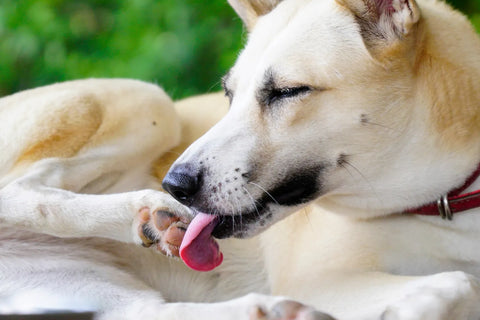
Why Do Dogs Lick Their Paws?
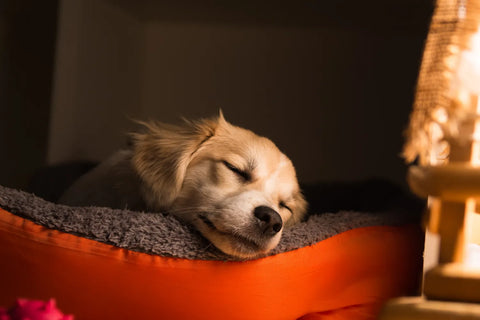
Why Do Dogs Whimper & Make Noises in Their Sleep?
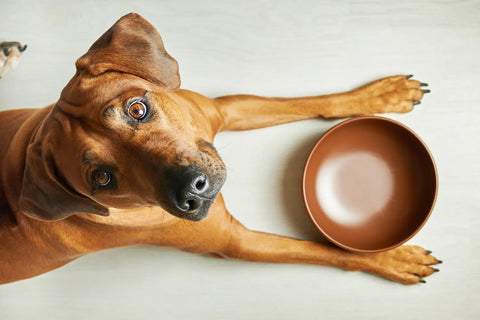
Healthy Vet-Approved Homemade Dog Food Recipes

How To Cook Sweet Potatoes for Dogs



